Established in Budapest in 2004 by textile designer Szilvia Szigeti and her interior designer husband Tamás Radnóti, Design Without Borders understands itself, and summarising to the point of inaccuracy, as a platform for international design dialogue across, or perhaps more accurately indifferent to, not only national borders but borders of genre, scale, approach, position et al.
By way of preparing for the platform's forthcoming 20th birthday a showcase of projects presented, hosted, by Design Without Borders over the past two decades is being staged in context of Vienna Design Week 2023.
A presentation that allows some insights into the aforementioned understandings of itself, and also access to some reflections on the realities of contemporary design in Europe.......
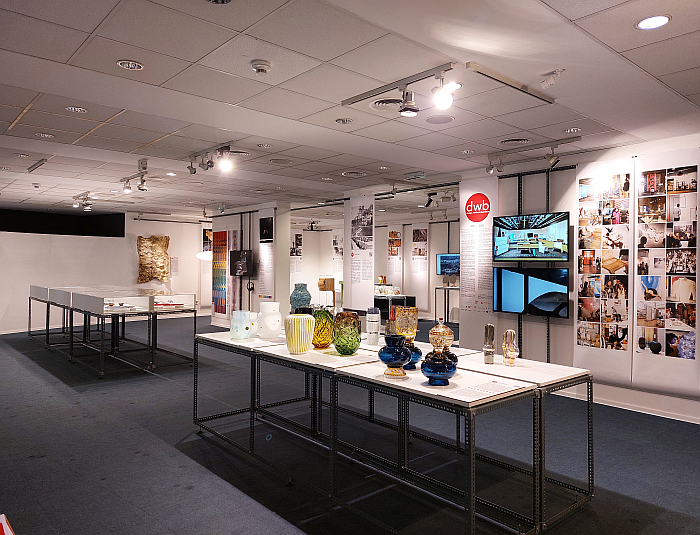
Our first, and until now, we regret to say, only, visit to Design Without Borders was in 2014, the platform's 10th anniversary edition which was staged in downtown Budapest alongside the 10th anniversary edition of madeinhungary, a Hungarian focussed platform, and the third edition of MeeD, Meeting of Central European Designers, two further platforms organised by Szilvia Szigeti and Tamás Radnóti; and at which we enjoyed a very long conversation with Szilvia, a conversation which remains with us, not least on account of the very real passion with which Szilvia spoke, a real passion that was also very audible in our brief chats with Tamás in Vienna.
A passion not only for Design Without Borders, of which they are both very passionate, but also, or specifically in context of Szilvia with whom it was a primary topic, our brief exchanges with Tamás were much more related to the Vienna Design Week presentation, for the realities for designers in Hungary, and of improving the visibility of and opportunities for designers in Hungary.
Which is a subject to which we will return, our focus here is and must be Design Without Borders at Vienna Design Week, save to note that back then a complaint, not only from Szilvia but amongst all the Hungarian designers we spoke to, was that no-one, but no-one, goes to Hungary to look for a designer? Why not? And today? A decade later? And who goes to Ljubljana or Tallinn or Bratislava or Warsaw or... Why not? Why do designers from eastern Europe need to come to western Europe to find partners? Thoughts that raised their heads in the Collegium Hungaricum, Vienna, and quickly took us back to Retrotopia. Design for Socialist Spaces at the Kunstgewerbemuseum, Berlin, and the considerations there, therein, that the post-1989 narrative of Capitalism having conquered Socialism, of the West having conquered the East led to a de facto denigration and degradation of eastern European design, and society, as less worthy, less valid, less good, than that in the west of the continent. Which is and was rubbish. As is the apparent continuation of that narrative: a continuation which means designers from eastern Europe essentially have to come west to establish themselves, certainly to establish themselves with international partners and in a genuinely international context, and ideally have to create works that can be marketed as 'Scandinavian' or 'Italian' in order to attract attention. Or create something to which lazy commentators can attach the term 'Bauhaus'. Whereby it always amuses us that without the Hungarian triumvirate of Marcel Breuer, Kálmán Lengyel and Anton Lorenz there would potentially be no steel tube furniture today. And generally without its Hungarians Bauhaus would have been a much duller, less avant-garde, much more esoteric sort of place.1 And then what would all the post-War western European designers have done? Exactly.
But as we say such are consideration for another day, for Design Without Borders isn't an Hungarian platform, or even an eastern European platform, but an international platform. Even if it does have very strong eastern European focus, something potentially explained by the realities of life as a (young) designer in eastern Europe. But subjects for another day. We must return to Vienna's 2nd Bezirk and the Collegium Hungaricum.
Presenting works by 76 designers from 14 nations and across a wide range of creative disciplines, and presenting an equally wide variety of positions, approaches and understandings, Design Without Borders Vienna Edition — as we alone are calling it — is on the one hand an invitation to reflect on what 20 years of Design Without Borders means, what it has achieved, why you haven't busied yourself with it before, and on the other is a very welcome opportunity, and a very warm invitation, to become introduced to the work of a wide variety of creatives of whom you've either never heard or if so then in passing; an invitation, and opportunity, which given the wide variety on show, and the difficulties we've all endured in the past few years of seeing the novel works designers have been developing in their physical isolation, is well worth taking. And very pleasing presented.
And while such a showcase is never about, and never should be about, judging the objects against one another but about considering them as individual projects in dialogue with the whole, we did spend lot more time engaging with some more than with others; whereby we must also add, there is a lot of jewellery on show, and while we have nothing against jewellery, in situations where time is tight, such as at a design week, we do tend to skip over the jewellery quicker than is perhaps fair, hence no jewellery in what follows, but a lot of jewellery on show in the Design Without Borders Vienna Edition.
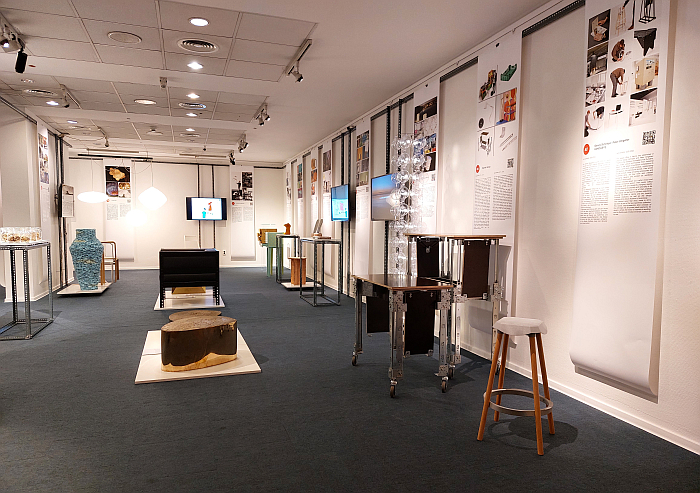
Launched in 2020, and presented at Design Without Borders in the same year, the Ultraleggera Chair is Zeta Studio's, is Oskar Zieta's, response to Gio Ponti's 1957 Superleggera chair, a work that itself was a response by Gio Ponti to his own 1951 Leggera chair, specifically a desire on Ponti's part to make that already unfeasibly physically and visually light chair, even more so. Which is what Zieta Studio also sought: and achieved, certainly in terms of physical lightness, we're less sure visually, would need to see a direct comparison. Weighing in at just 1660 grams the Ultraleggera chair is not only an ultra leggera chair but is also formally a very pleasing work, and although we didn't get to try it, and therefore can't comment on the sitting quality, which is important, it's a chair, Oskar and his team are well experienced in these things, and so we see no reason to doubt that. Constructed entirely, as in 100%, from aluminium, a material, as noted from Into the Deep. Mines of the Future at the Zeppelin Museum, Friedrichshafen, whose entire raison d'etre since its first extraction has been to enable previously unimaginable lightness and robustness and durability in objects of all types, Zieta Studio make a big play on the fact it is 100% recyclable; for our part given the myriad problems of aluminium extraction, processing and trading, we'd prefer it if it was 100% recycle. But accept there are issues with recycling aluminium, and accept that Zieta Studio have much more experience in aluminium, in sourcing and assessing aluminium than us, and so we'll leave that discussion for another day.
And end by noting that among Ultraleggera's many charms and many endearing aspects, for us it primarily, and most importantly represents a very satisfying, and arguably a very necessary, alternative exploitation of Oskar Zieta's FIBU technology, a technology which for all we have long admired and delighted in, was in danger of becoming understood as a one-trick pony, a bit of a whatever; that slightly bumpy, almost comic sketch, visual of the Plopp collection, for all it is appealing and engaging, and for all that we will always be very thankful that Plopp exists, over time can/could come to define the technology and thereby tend to undervalue it, could/would see the technology become objectified and thereby irrelevant. Which would be shame. It's a good process. And which is perhaps something Leo Koda should consider in context of the further development of his In Fill Out project, keeping it moving in new directions, but we digress....... Whereas in Plopp the FIBU technology is very much at the forefront, with the Ultraleggera the FIBU technology is used must more discretely, you don't actually know it has been used unless you are looking for it or are told it is there, which, we'll argue is important, for its annoymousness yet centrality to the Ultraleggera helps underscore and highlight not only the importance and relevance of the FIBU technology, but the wide potential of FIBU as we move forward.
More information on Ultraleggera and Zieta Studio can be found at www.zieta.pl
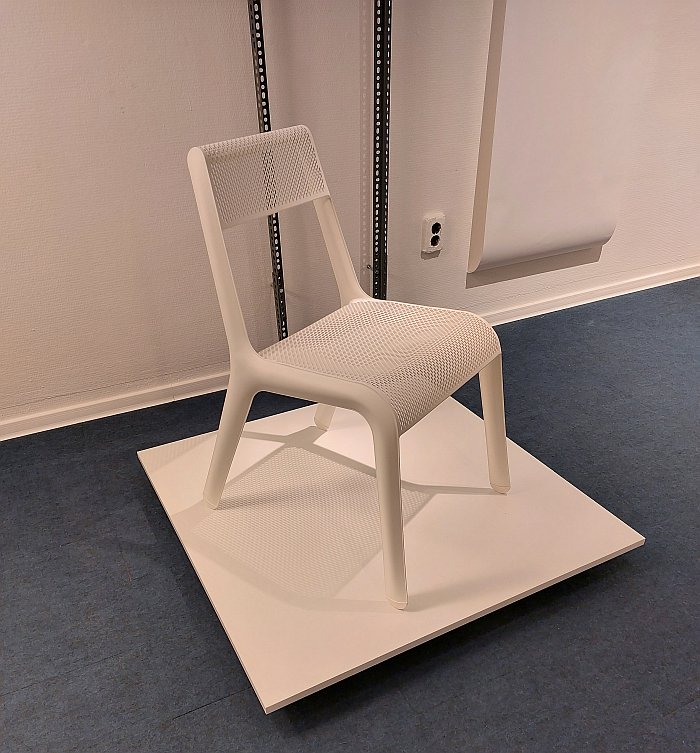
First shown at Design Without Borders in 2021 the Riberia collection by Milan based Krill Design Team is crafted from 3D printed orange peel.... yes, you did read that correctly.
3d printed orange peel.
Specifically printed with the studios self-developed Rekrill material, a material, as we experienced in Vienna, which aside from the orange cake character the curators note, also elicited something of stone or sand, a confusing mix of contradictory comparisons which tends to underscore that it's doing something very novel.
But for all is doing something important: as an approach and an understanding, as a combination of, an exploration of, the possibilities of 3D printing in context of the urgent necessity of a more responsible use of resources, the objects of the Riberia collection are interesting and informative contributions to contemporary discussions on the production, materials and relationships with and of our objects of daily use, the questions of where we want to go. And in the is use of waste material in a decentralised, decentralisable, production process, help lay paths to the lo-cost, lo-tech, lo-cal strategies that, arguably, are needed to help relieve our current malaises. And thus is the sort of satisfying project where the presented objects are almost irrelevant. If no less communicative for that fact.
In addition to the Riberia collection the Krill Design Team have also developed the Amalfi collection from 3D printed salvaged lemon skins and the Napoli collection from 3D printed salvaged coffee grounds. It's Bella Italia pure! That Italian lifestyle all seek in a series compact 3D printed objects for the home.
More information on the Riberia Collection and the Krill Design Team can be found at https://krilldesign.net/
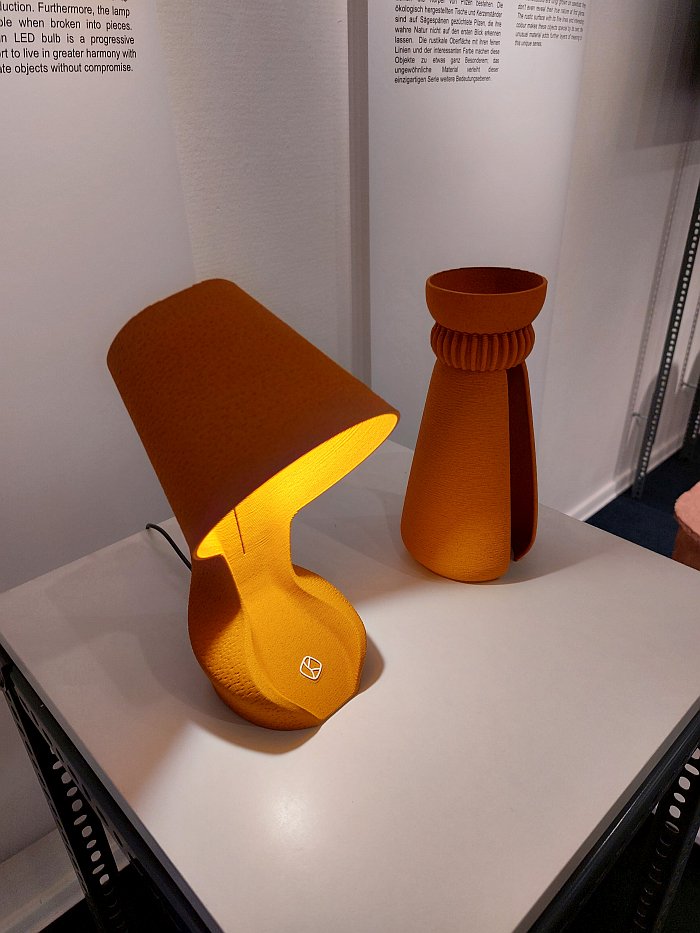
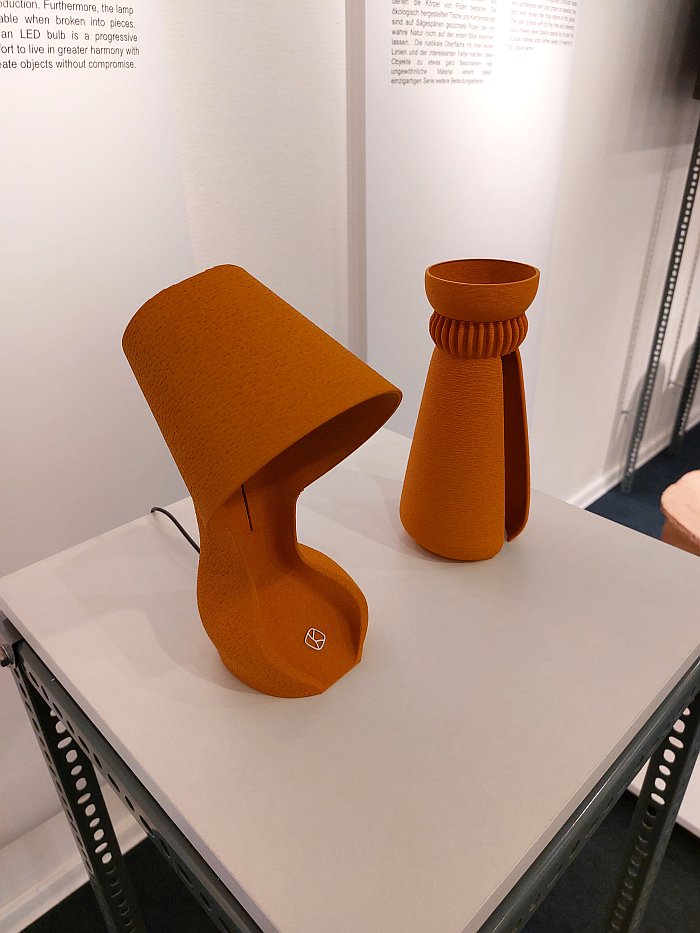
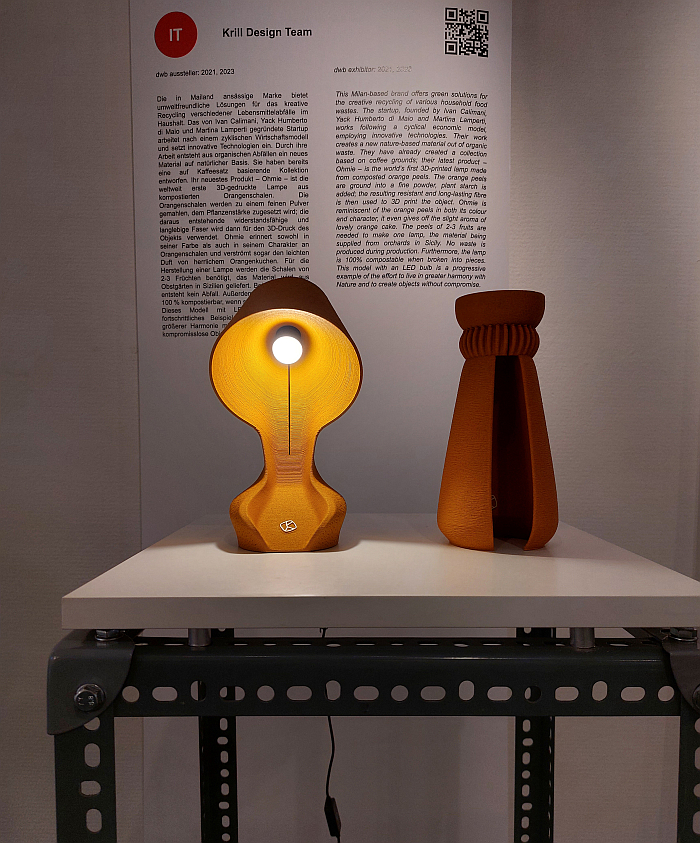
Vienna based mischer'traxler studio, a.k.a. Katharina Mischer and Thomas Traxler are not the sort of design studio you contact to design you a chair, certainly not if what you're looking for is chair; rather the approach and understanding of mischer'traxler studio mean you're much more likely to get a concept which may lead you to the possibility of an approach that could eventually allow for the design of an object that could be employed as a chair. Which isn't criticism, far, far, from, we take great delight in the studio's work and never knowingly ignore their projects, nor seek to understand what we can learn from them. And over the years we've learned a lot from mischer'traxler.
The project Ratio was commissioned in 2019 by Ljubljana Museum of Architecture and Design, MAO, in context of their platform Made in: crafts — design narratives, and was presented at Design Without Borders the same year, and in essence, and summarising dangerously highlights, comments on, allows for reflection on the amount of metal ores contained in differing rocks, and does so through the creation of a variety of furniture objects where the amount of metal present in the object as a percentage of the total object corresponds to that present in the rock: in context of Design Without Borders Vienna Edition something ably demonstrated by four rods with metal caps of differing sizes depending on the amount of copper, aluminium, zinc or iron ore in that rock. Considerations on the metal ore content of different rocks which isn't just of interest to geologists, or only stonemasons, nor is it just idle artistic curiosity, but something of relevance and important to us all, not least because it is one of those realities that is driving the deep sea and deep space mining discussed in, again, Into the Deep. Mines of the Future at the Zeppelin Museum, Friedrichshafen: the concentration of the rare earths we need for our high-tech society are in much greater concentrations in the rocks on the sea beds than on the earth's surface, thus there is, potentially, greater economic gain to be made from their mining on the sea bed. And much greater environmental damage to be wreaked. While a material such as, for example, Helium-3 which could be important in nuclear fusion reactors, is found in much greater concentrations in lunar rock, hence the very real considerations in many countries as to how we can mine on the moon. The question is if we want all that? A discussion that needs must be staged, whereby it is almost too late for the one about sea beds. And an important part of that debate is being better informed about geology. And thinking about how many smart phones and smart household appliances you actually need. Or perhaps better put you can justify.
More information on the Ratio project and mischer'traxler studio can be found at https://mischertraxler.com/
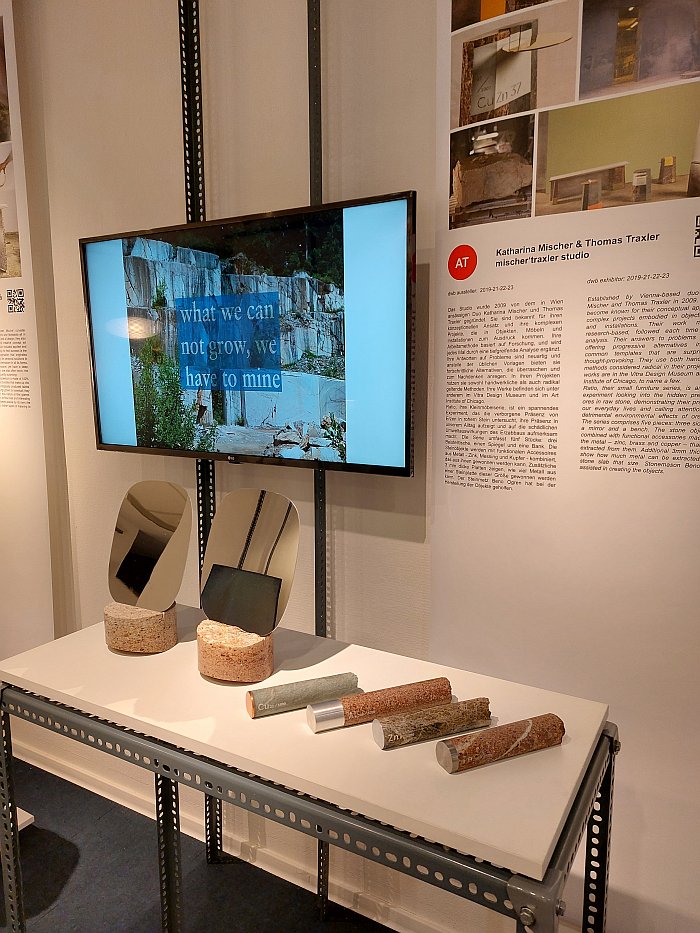
Just before we reached the Collegium Hungaricum we spotted on the other side of the road a parked Trabant, which although the sort of thing we'd always notice on the streets of Vienna, particularly caught our attention on account of its Vienna number plate. We stopped, stared, stared, stared, and then wandered into the Collegium Hungaricum and Design Without Borders where one of the first objects to greet us was the Trabant Sofa by Regős István, a work that Design Without Borders first presented in 2006.
Primarily a painter, Budapest based Regős István is also, through the Palmetta Design & Textile Art Gallery he runs with his wife Anna, a long time promoter of design in Hungary, and also has a biography as an object designer, including, obviously, the Trabant Sofa, a sofa crafted by Regős from the actual back seat of an actual Trabant and which was inspired by, and stands as, Regős's response to, comment on, and immortalising of the so-called Pan-European Picnic staged on the Austrian/Hungarian border in August 1989, one of those earliest tangible, irreversible, moments in the cracking of the Iron Curtain that led to a Europe without Borders, a joyous, wondrous Europe we're all in danger of losing if we don't start paying attention. And which makes the Trabant Sofa an important, apposite, reminder of the long, difficult, path taken to that Europe, that it is a construction crafted from disparate components to a coherent whole, something more than the sum of its parts, and which despite its apparent durability, can be quickly disassembled.
And a work which in its very obvious Postmodern expression is indicative of design as borderless, of design without borders, and thus a work that helps highlight that the position embodied by the title of platform Szilvia and Tamás created should be a lot more self-evident than the popular pigeon-holing of design allows it to be.
While the very obvious nod to, and easy comparison with, Ron Arad's 1981 Rover chair, allows access to an unexpected insight: 'Rover Chair' because the chair came from Rover, 'Trabant Sofa' because the chair cam from a Trabant: 'Rover' as in wandering freely in random directions, 'Trabant' as in continually circling the same spot with no real opportunity to physically exit from your externally defined orbit. Who knew car names could be so indicative of the personal freedoms of the individuals of the nations in which the cars were produced?
And briefly to come back to the reality of life as a designer in Hungary that we're not going to talk about here.
As noted in our introductory post to Vienna Design Week 2023 we really must get back to Budapest, something we've saying to an András Kerékgyártó for years, and because András is a nice chap he doesn't point out we've been telling him that for years. But he should. And we really must.
A good opportunity, and very apposite opportunity, would unquestionably be Budapest Design Week, whose 2023 edition we're going to miss. Once again. Age old story of other priorities, other fires. Regrettably. Unavoidably.
But if you have time to go, if you've nothing else on between October the 5th and 15th, we can recommend it, and where amongst a great many exhibitions, showcases, talks et al you will find the 2023 edition of Design Without Borders.
Alternatively, in addition Vienna and Budapest aren't that far apart, at least not geographically, The Design Without Borders Vienna Edition can be viewed at Collegium Hungaricum, 2., Hollandstraße 4, Vienna until Thursday August 5th
Further details, including information on opening times, can be found at www.viennadesignweek.at/design-without-borders
And full information on Design Without Borders, inclduing an archive of past editions, can be found at https://design-without-borders.eu/
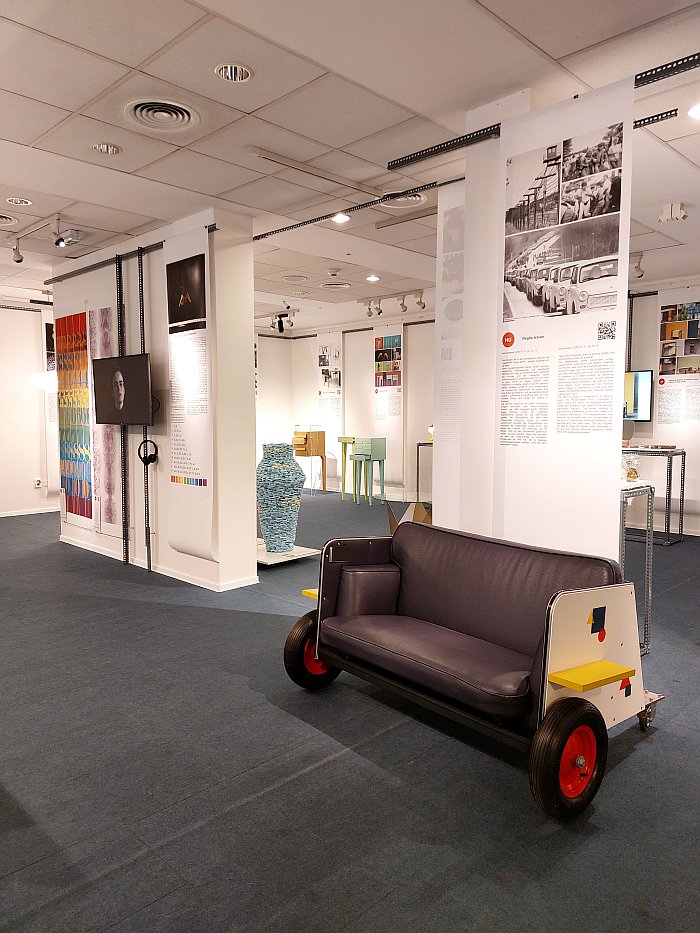
1Yes, Marcel Breuer, Kálmán Lengyel, Anton Lorenz, et al were all Hungarians in Germany, not in Hungary, but one must remember that the Europe of that period was coming out of an Imperialist age, and for all that nations were emerging from those empires as independent entities, established hierarchies, dependences and relationships still existed. It was a complex time. As, yes, is ours.......